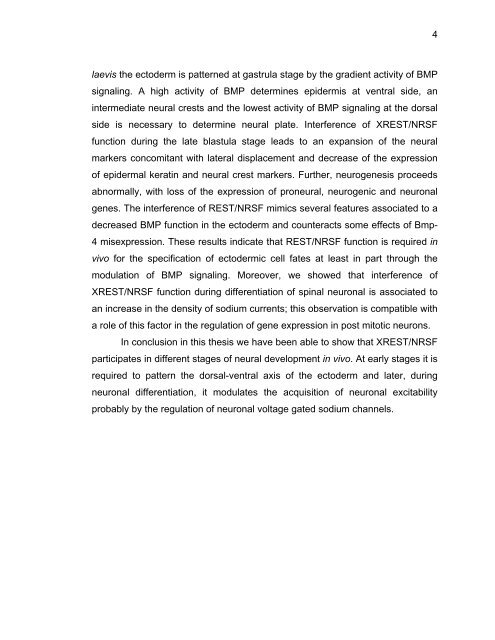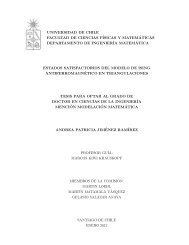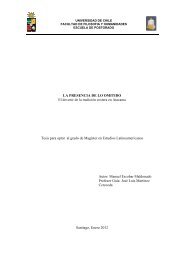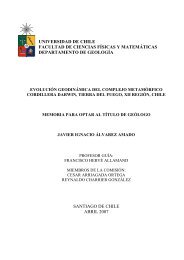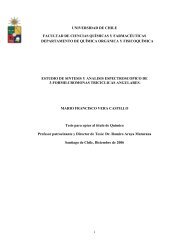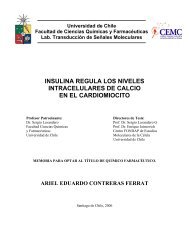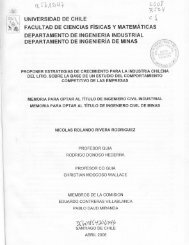Participación del Factor Silenciador Neuronal Restrictivo - Tesis ...
Participación del Factor Silenciador Neuronal Restrictivo - Tesis ...
Participación del Factor Silenciador Neuronal Restrictivo - Tesis ...
Create successful ePaper yourself
Turn your PDF publications into a flip-book with our unique Google optimized e-Paper software.
laevis the ectoderm is patterned at gastrula stage by the gradient activity of BMP<br />
signaling. A high activity of BMP determines epidermis at ventral side, an<br />
intermediate neural crests and the lowest activity of BMP signaling at the dorsal<br />
side is necessary to determine neural plate. Interference of XREST/NRSF<br />
function during the late blastula stage leads to an expansion of the neural<br />
markers concomitant with lateral displacement and decrease of the expression<br />
of epidermal keratin and neural crest markers. Further, neurogenesis proceeds<br />
abnormally, with loss of the expression of proneural, neurogenic and neuronal<br />
genes. The interference of REST/NRSF mimics several features associated to a<br />
decreased BMP function in the ectoderm and counteracts some effects of Bmp-<br />
4 misexpression. These results indicate that REST/NRSF function is required in<br />
vivo for the specification of ectodermic cell fates at least in part through the<br />
modulation of BMP signaling. Moreover, we showed that interference of<br />
XREST/NRSF function during differentiation of spinal neuronal is associated to<br />
an increase in the density of sodium currents; this observation is compatible with<br />
a role of this factor in the regulation of gene expression in post mitotic neurons.<br />
In conclusion in this thesis we have been able to show that XREST/NRSF<br />
participates in different stages of neural development in vivo. At early stages it is<br />
required to pattern the dorsal-ventral axis of the ectoderm and later, during<br />
neuronal differentiation, it modulates the acquisition of neuronal excitability<br />
probably by the regulation of neuronal voltage gated sodium channels.<br />
4


